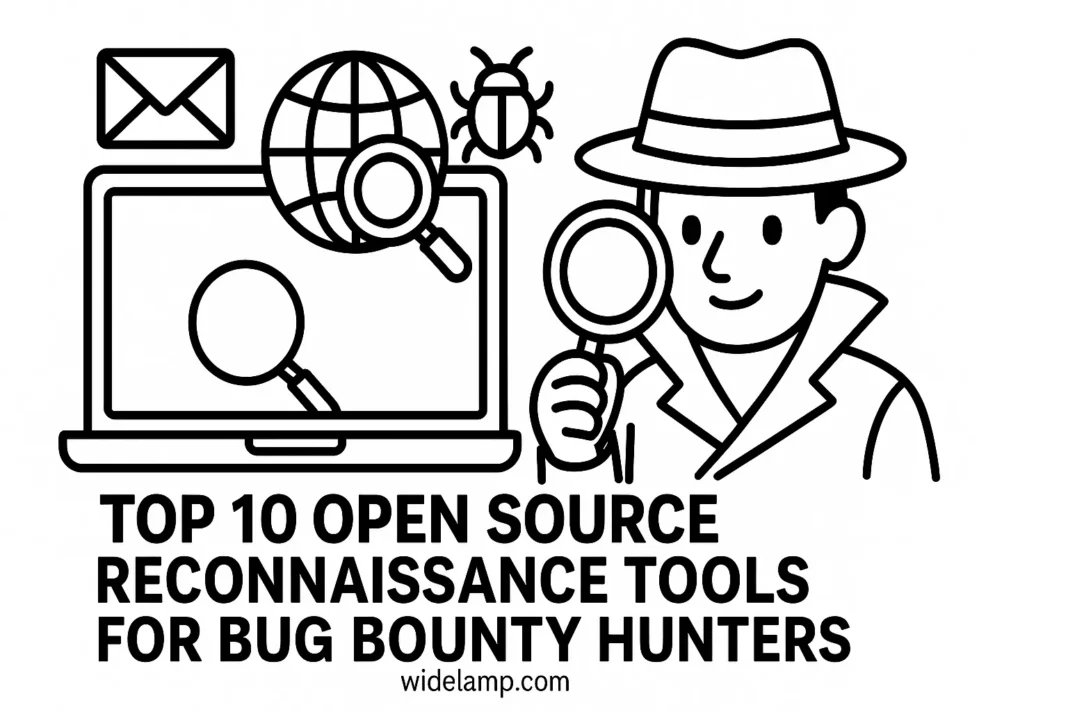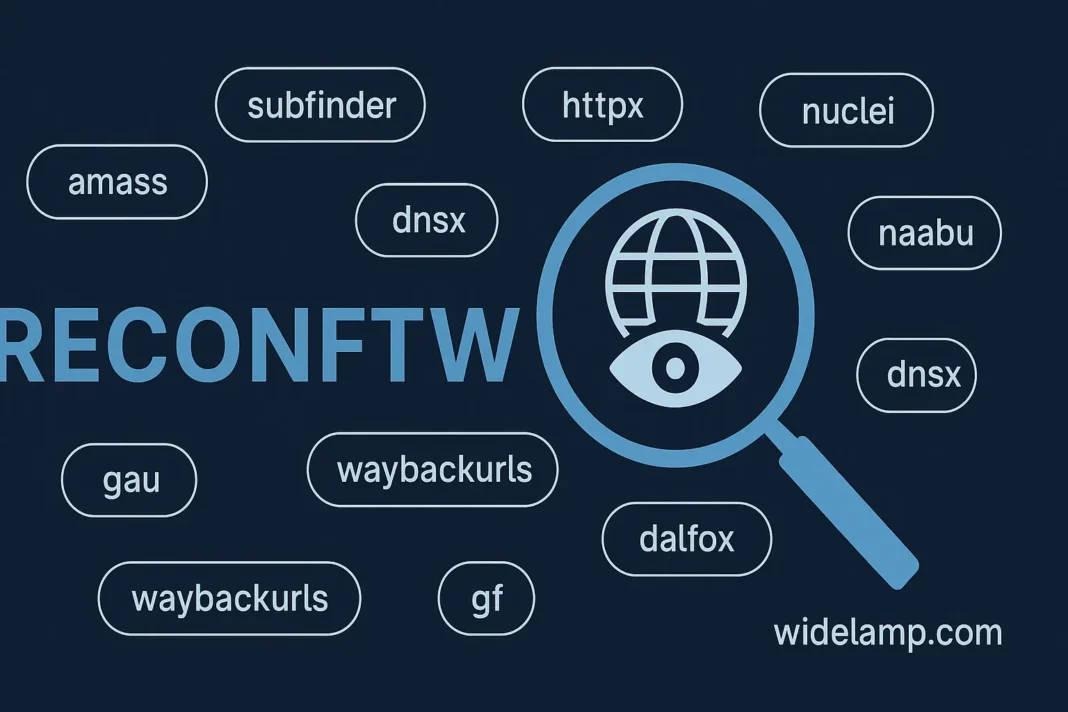|
Getting your Trinity Audio player ready...
|
Bug bounty hunting has become a cornerstone of modern cybersecurity, with organizations worldwide relying on ethical hackers to identify vulnerabilities before malicious actors can exploit them. Success in bug bounty hunting largely depends on having the right reconnaissance tools at your disposal. The top 10 open source reconnaissance tools for bug bounty hunters form an essential arsenal that every security researcher should master to maximize their discovery potential and improve their chances of finding critical vulnerabilities.
Table of Contents
Why Reconnaissance Tools Matter in Bug Bounty Hunting?
The reconnaissance phase represents the most critical aspect of any successful bug bounty engagement. During this initial phase, hunters gather as much information as possible about their target systems, applications, and infrastructure. The quality of reconnaissance directly impacts the success of subsequent testing phases, as comprehensive intelligence gathering reveals hidden attack surfaces, forgotten assets, and potential entry points that might otherwise go unnoticed
Modern bug bounty tools have evolved significantly, incorporating AI-powered vulnerability scanning, faster processing methods, cross-platform compatibility, and robust open-source community support
. These advancements enable hunters to keep pace with increasingly sophisticated security challenges while automating time-consuming manual processes.

Top 10 Open Source Reconnaissance Tools for Bug Bounty Hunters

1. Amass – The Domain Intelligence Powerhouse
Amass stands as one of the most powerful subdomain enumeration and attack surface mapping tools available to bug bounty hunters
Developed by the OWASP project, this comprehensive reconnaissance tool excels at discovering hidden assets through both passive and active scanning techniques.
Key Features:
- In-depth attack surface mapping and DNS enumeration
- Integration with over 55+ data sources including APIs and databases
- Passive and active subdomain discovery techniques
- Certificate transparency log analysis
- Comprehensive OSINT data collection
Usage Examples:
bash# Basic subdomain enumeration
amass enum -d example.com
# Passive reconnaissance only
amass enum -passive -d example.com
# With custom wordlist
amass enum -d example.com -w wordlist.txt
Amass has proven particularly effective for bug bounty hunters because it can map entire organizational attack surfaces, revealing forgotten subdomains and development environments that often contain critical vulnerabilities
Read More: Reconftw tools feature and commands
2. Sublist3r – The OSINT Subdomain Hunter
Sublist3r represents a fundamental tool in every bug bounty hunter’s toolkit, specializing in subdomain enumeration through open-source intelligence gathering
This Python-based tool aggregates data from multiple search engines and third-party services to build comprehensive subdomain lists.
Key Features:
- Multi-source subdomain discovery using Google, Yahoo, Bing, Baidu
- Integration with VirusTotal, DNSdumpster, and ReverseDNS
- Built-in brute-force capabilities with improved wordlists
- Python 2 and 3 compatibility
- Simple command-line interface
Installation and Usage:
bash# Installation
git clone https://github.com/aboul3la/Sublist3r.git
pip install -r requirements.txt
# Basic usage
python sublist3r.py -d example.com
# With brute force
python sublist3r.py -d example.com -b
The tool’s effectiveness lies in its ability to passively gather subdomain information without directly interacting with target systems, making it ideal for initial reconnaissance phases
3. Nuclei – The Template-Based Vulnerability Scanner
Nuclei has revolutionized vulnerability scanning in the bug bounty community by providing a fast, template-based approach to security testing. This YAML-powered scanner enables hunters to detect misconfigurations, vulnerabilities, and security issues across various protocols and technologies
Key Features:
- 5,000+ community-contributed vulnerability templates
- Fast scanning with customizable concurrency
- Support for HTTP, DNS, TCP, and SSL protocols
- CI/CD integration capabilities
- Template marketplace for specialized testing
Security Note: Nuclei recently addressed a critical vulnerability (CVE-2024-43405) in versions 3.0.0-3.3.1 that could allow signature bypass and code execution. Users should ensure they’re running version 3.3.2 or later
Usage Examples:
bash# Basic vulnerability scan
nuclei -u https://example.com
# Using specific templates
nuclei -u https://example.com -t cves/
# Scanning multiple targets
nuclei -l targets.txt
The tool’s template-based approach allows for rapid deployment of new vulnerability checks, making it invaluable for staying current with emerging threats
4. Nmap – The Network Discovery Foundation
Nmap (Network Mapper) remains the gold standard for network discovery and port scanning in cybersecurity
Created by Gordon Lyon, this versatile tool provides comprehensive network mapping capabilities essential for understanding target infrastructure.
Key Features:
- Host discovery and port scanning across multiple protocols
- Service and version detection
- Operating system fingerprinting
- Nmap Scripting Engine (NSE) for custom vulnerability checks
- Support for stealth scanning techniques
Common Scanning Techniques:
bash# Basic port scan
nmap -sS -p 1-1000 192.168.1.1
# Service version detection
nmap -sV example.com
# OS detection
nmap -O example.com
# Comprehensive scan with scripts
nmap -sC -sV -O example.com
Nmap’s extensive feature set makes it indispensable for network reconnaissance, enabling hunters to identify open services, potential entry points, and system configurations
5. Masscan – The High-Speed Port Scanner
Masscan provides internet-scale port scanning capabilities, capable of scanning the entire IPv4 address space in under five minutes
This high-performance scanner complements Nmap by offering unprecedented speed for large-scale reconnaissance.
Key Features:
- Transmission rates up to 25 million packets per second
- Asynchronous scanning architecture
- Internet-scale scanning capabilities
- Custom source IP and port configuration
- JSON output format for automation
Usage Examples:
bash# High-speed port scan
masscan 10.0.0.0/8 -p80,443 --rate=1000
# Scan specific ports with custom rate
masscan 192.168.1.0/24 -p1-1000 --rate=10000
# Output to file
masscan 10.0.0.0/8 -p80 -oJ output.json
Masscan’s speed makes it ideal for initial network surveys and large-scale asset discovery phases
6. FFUF – The Fast Web Fuzzer
FFUF (Fuzz Faster U Fool) has become the go-to tool for directory and file discovery on web applications
Written in Go, this fast fuzzer excels at uncovering hidden resources that might contain vulnerabilities.
Key Features:
- Multi-threaded fuzzing with configurable concurrency
- Directory, file, and parameter fuzzing
- Virtual host discovery capabilities
- Custom wordlist support
- Advanced filtering options
Practical Applications:
bash# Directory discovery
ffuf -w /path/to/wordlist -u https://target/FUZZ
# Virtual host fuzzing
ffuf -w vhost-wordlist -H "Host: FUZZ.target.com" -u https://target
# Parameter fuzzing
ffuf -w params.txt -u https://target/page?FUZZ=value
FFUF’s speed and flexibility make it essential for comprehensive web application reconnaissance
7. Gobuster – The Go-Powered Directory Brute Forcer
Gobuster provides high-performance directory and file enumeration for web applications
. Built in Go, this tool offers multiple scanning modes including directory, DNS, and virtual host discovery.
Key Features:
- Multi-mode scanning (directory, DNS, S3, GCS)
- High-performance concurrent scanning
- Wildcard support for DNS enumeration
- Custom wordlist integration
- Pattern-based scanning
Usage Examples:
bash# Directory enumeration
gobuster dir -u https://example.com -w wordlist.txt
# DNS subdomain discovery
gobuster dns -d example.com -w subdomains.txt
# Virtual host enumeration
gobuster vhost -u https://example.com -w vhosts.txt
Gobuster’s versatility across different reconnaissance scenarios makes it a valuable addition to any bug bounty toolkit
8. SpiderFoot – The Automated OSINT Framework
SpiderFoot automates the collection and analysis of open-source intelligence from over 200 data sources
This comprehensive framework provides both web-based and command-line interfaces for intelligence gathering.
Key Features:
- 200+ data source integrations
- Automated data correlation and analysis
- Web-based dashboard interface
- Modular architecture with customizable scans
- Visual data representation and reporting
Installation and Setup:
bash# Install SpiderFoot
pip3 install spiderfoot
# Start web interface
spiderfoot -l 127.0.0.1:5001
# Command-line usage
python3 sf.py -s example.com
SpiderFoot’s automation capabilities make it ideal for comprehensive background intelligence gathering before active testing begins
9. HTTProbe – The Web Service Validator
HTTProbe efficiently validates which domains in a list have working HTTP or HTTPS services
This simple yet effective tool helps filter live targets from large domain lists.
Key Features:
- Fast HTTP/HTTPS probing
- High concurrency support
- Custom port probing
- Preference settings for HTTPS
- Integration-friendly design
Usage Examples:
bash# Basic probing
cat domains.txt | httprobe
# Custom concurrency and timeout
cat domains.txt | httprobe -c 50 -t 3000
# Custom ports
cat domains.txt | httprobe -p http:81 -p https:8443
HTTProbe’s simplicity and speed make it perfect for validating discovered subdomains before further testing
10. Recon-ng – The Metasploit-Style Reconnaissance Framework
Recon-ng provides a full-featured reconnaissance framework with a Metasploit-like interface
This Python-based framework offers modular OSINT capabilities with database integration and extensive API support.
Key Features:
- Modular architecture with 100+ reconnaissance modules
- Database integration for data storage and correlation
- API integrations with popular services
- Interactive command-line interface
- Workspace management for organized campaigns
Getting Started:
bash# Start Recon-ng
recon-ng
# Create workspace
workspaces create example_hunt
# Install modules
marketplace install all
# Load and configure module
modules load recon/domains-hosts/hackertarget
options set SOURCE example.com
run
Recon-ng’s framework approach allows for comprehensive reconnaissance campaigns with organized data management
Essential Tool Combinations and Workflows
Successful bug bounty hunters rarely rely on individual tools but instead create workflows that combine multiple reconnaissance tools for maximum effectiveness. Here are some proven combinations:
Subdomain Discovery Pipeline
bash# Stage 1: Passive discovery
amass enum -passive -d example.com -o amass.txt
sublist3r -d example.com -o sublist3r.txt
# Stage 2: Validation
cat amass.txt sublist3r.txt | sort -u | httprobe > live_hosts.txt
# Stage 3: Port scanning
cat live_hosts.txt | nmap -iL - -oA nmap_results
Web Application Assessment Workflow
bash# Stage 1: Directory discovery
ffuf -w common.txt -u https://target/FUZZ -o ffuf_results.json
# Stage 2: Technology detection
nuclei -u https://target -t technologies/
# Stage 3: Vulnerability scanning
nuclei -u https://target -t cves/ -t vulnerabilities/
Tool Selection and Best Practices
When building your reconnaissance toolkit, consider these selection criteria:
Performance Requirements:
- Network scanning: Masscan for speed, Nmap for depth
- Web fuzzing: FFUF for speed, Gobuster for versatility
- Subdomain discovery: Amass for comprehensiveness, Sublist3r for simplicity
Integration Capabilities:
- Choose tools that support standard output formats (JSON, XML, CSV)
- Prioritize tools with API integration capabilities
- Select frameworks that support custom modules and extensions
Maintenance and Updates:
- Favor actively maintained projects with regular updates
- Consider tools with strong community support
- Ensure compatibility with your target operating systems
Security Considerations and Responsible Use
Bug bounty hunters must use reconnaissance tools responsibly and within legal boundaries:
Legal Guidelines:
- Always obtain proper authorization before testing
- Respect scope limitations defined in bug bounty programs
- Follow responsible disclosure practices
- Maintain detailed documentation of testing activities
Rate Limiting and Stealth:
- Configure appropriate delays between requests
- Use proxy rotation for large-scale scanning
- Monitor target resources to avoid service disruption
- Implement detection evasion techniques when appropriate
Future Trends in Reconnaissance Tools
The reconnaissance tool landscape continues evolving with several emerging trends:
AI and Machine Learning Integration:
- Automated vulnerability pattern recognition
- Intelligent target prioritization
- Predictive analysis for asset discovery
- Natural language processing for OSINT analysis
Cloud-Native Capabilities:
- Containerized tool deployment
- Serverless scanning architectures
- Cloud provider integration
- Distributed scanning capabilities
Enhanced Automation:
- Workflow orchestration platforms
- Continuous reconnaissance monitoring
- Integration with CI/CD pipelines
- Automated reporting and alerting
Setting Up Your Reconnaissance Environment
A well-configured reconnaissance environment significantly impacts hunting efficiency:
Virtual Machine Setup:
- Kali Linux or Parrot OS for tool pre-installation
- Adequate RAM (8GB+) for concurrent scanning
- Fast SSD storage for large wordlists and results
- Multiple network interfaces for traffic isolation
Tool Management:
- Use package managers (apt, brew) for easy updates
- Maintain custom wordlists and configuration files
- Implement version control for custom scripts
- Create automated installation scripts for quick deployment
Data Organization:
- Establish consistent directory structures
- Implement naming conventions for scan results
- Use databases for correlation and analysis
- Maintain separate environments for different programs
The top 10 open source reconnaissance tools for bug bounty hunters represent essential components of a successful security testing arsenal. By mastering these tools and understanding their optimal applications, hunters can significantly improve their vulnerability discovery rates while maintaining efficient and responsible testing practices. Regular tool updates, continuous learning, and adaptation to emerging techniques remain crucial for long-term success in the evolving bug bounty landscape.
The combination of these powerful reconnaissance tools, when used skillfully and responsibly, provides bug bounty hunters with comprehensive capabilities for mapping attack surfaces, identifying hidden assets, and discovering vulnerabilities across modern digital infrastructures. Success in bug bounty hunting ultimately depends not just on having access to these tools, but on developing the expertise to use them effectively in combination while respecting legal and ethical boundaries.




